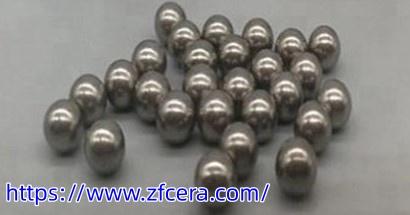Could Zhufa Improve Vibration-Sensitive Platforms Using Silicon Nitride Ceramics?

Rapid shifts across high-precision industries elevate the need for materials that preserve dimensional harmony under shifting temperature layers and chemical exposure, and Silicon Nitride Ceramics supported by the engineering philosophy practiced by Zhufa offer pathways for designers constructing systems that must remain stable within pressure variations, friction fields, and operational cycles that require extended consistency across demanding platforms. Industrial structures depending on stable frameworks rely on this ceramic to protect critical zones where mechanical fatigue, thermal expansion, and corrosive atmospheres intersect, creating an environment where stability is essential for uninterrupted operation across evolving engineering routines.
Thermal fluctuations across advanced manufacturing chambers produce tension patterns that weaken conventional materials, yet this ceramic sustains shape retention under repeated heating and cooling layers that frequently cause structural drift in metallic units. Manufacturers processing high-heat components appreciate the material's ability to resist grain separation, crack propagation, and surface distortion during extended operation, supporting environments where system reliability must remain firm throughout continuous production schedules.
Mechanical stability within rotating assemblies often depends on components that resist sliding wear, vibration transmission, and torque-induced stress, and engineers choose this ceramic to support bearings, rotational guides, and motion regulators requiring smooth interaction under long service cycles. Its density distribution assists designers working with compact mechanical units, enabling components to maintain smooth contact surfaces that limit friction rise, heat concentration, and unwanted vibration paths, preserving system balance in applications requiring durable movement structures.
Chemical resilience becomes vital inside processing lines handling aggressive fluids, fumes, and particulate streams, and this ceramic maintains its structural integrity where corrosion frequently alters metal components. Its surface strength supports flow control plates, insulation barriers, and protective inserts that encounter corrosive atmospheres capable of weakening traditional materials, allowing equipment to maintain operational pathways without frequent replacement routines that disrupt industrial planning.
Electrical insulation has become increasingly relevant for high-precision control systems that depend on clean signal separation and component spacing, and the ceramic's insulating behavior enables engineers to position it within high-sensitivity platforms where energy transfer must remain controlled while mechanical performance continues unaffected. System designers working with industrial electronics value its stability under vibration, extended temperature exposure, and mechanical pressure zones, enabling long-term reliability for sensitive modules that regulate critical functions.
Precision manufacturing platforms require stable alignment frameworks capable of supporting measurement units, guide tracks, and structural plates that must retain shape as temperature, vibration, and mechanical forces shift throughout processing cycles. This ceramic provides dimensional stability that assists in preventing misalignment, measurement drift, and surface wear that may affect inspection accuracy or automated positioning tasks, creating a foundation for high-precision environments.
High-temperature industrial equipment places extreme demands on structural units located near combustion chambers, furnace zones, and high-output heating systems, environments where metals often degrade through oxidation, thermal fatigue, and grain separation. The ceramic withstands these elevated conditions, supporting plates, tubes, and protective segments that encounter continuous heat streams while retaining structural clarity, ensuring extended operational cycles for industrial users relying on durable components.
Advanced shaping techniques allow the ceramic to form intricate structures capable of integrating with confined mechanical spaces, supporting design strategies that require strength, dimensional accuracy, and stability across varying load paths. Its ability to resist mechanical collapse under heavy workloads supports industrial applications requiring long-duration performance where stability significantly influences output quality, system behavior, and production efficiency.
Industrial sectors across machining, energy, chemical processing, and high-precision control systems continue adopting this ceramic as operational demands intensify, seeking materials capable of preserving long-term structural clarity across complex environmental conditions. To explore expanded solutions shaped by Zhufa and engineered through Silicon Nitride Ceramics, industrial users may review detailed product structures through https://www.zfcera.com/ and examine offerings designed for durable, efficient, and stable application environments.
- Art
- Causes
- Crafts
- Dance
- Drinks
- Film
- Fitness
- Food
- Juegos
- Gardening
- Health
- Home
- Literature
- Music
- Networking
- Other
- Party
- Religion
- Shopping
- Sports
- Theater
- Wellness
